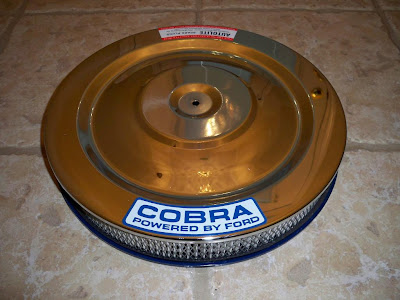I started by painting a few small parts I blasted this past week. The main thing I painted was the bolts for the export brace. These are the original bolts and nuts. They are originally gold diacrhomate coated. I can purchase a set with the correct finish for $12.00. I can always replace these later with the correct ones but at the moment, I don't want to spend the money for these.
I also painted the an alternator mounting bolt and spacer. I stopped by a new Ace hardware near my home and purchased the other two mounting bolts. The ones I replaced with those purchased at Ace were pitted and not original. I considered buying the correct bolts to mount the alternator from NPD but they cost $7.00. Again, I can replace these later if I they are too noticiable.
The last thing I did was create two patch panels. I made one for the area underneath the battery. I also made a patch panel for a hole made in the radiator support for the A/C system. This reason behind the second patch panel is a little detailed, so I'll create another post on it later.








































